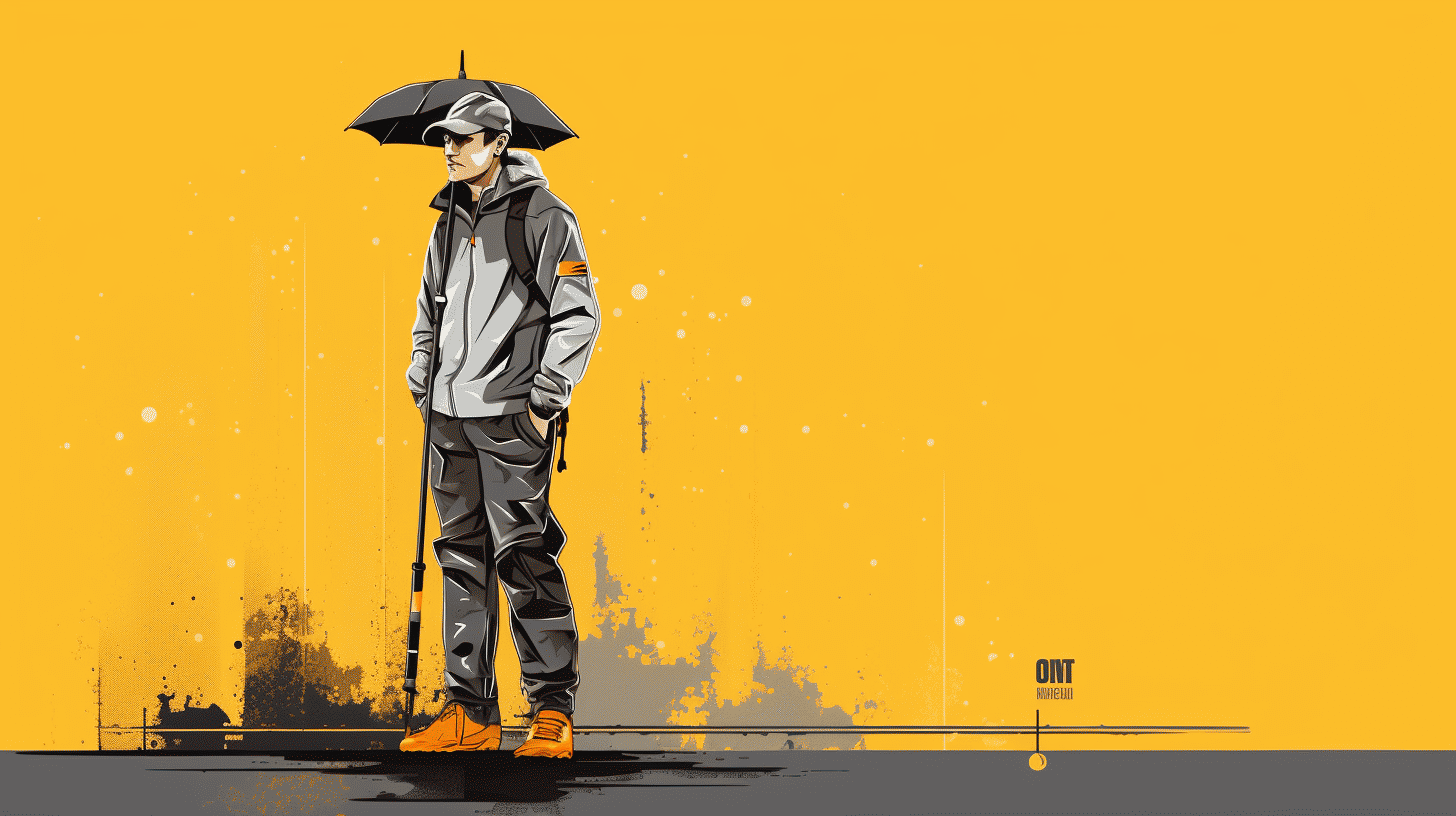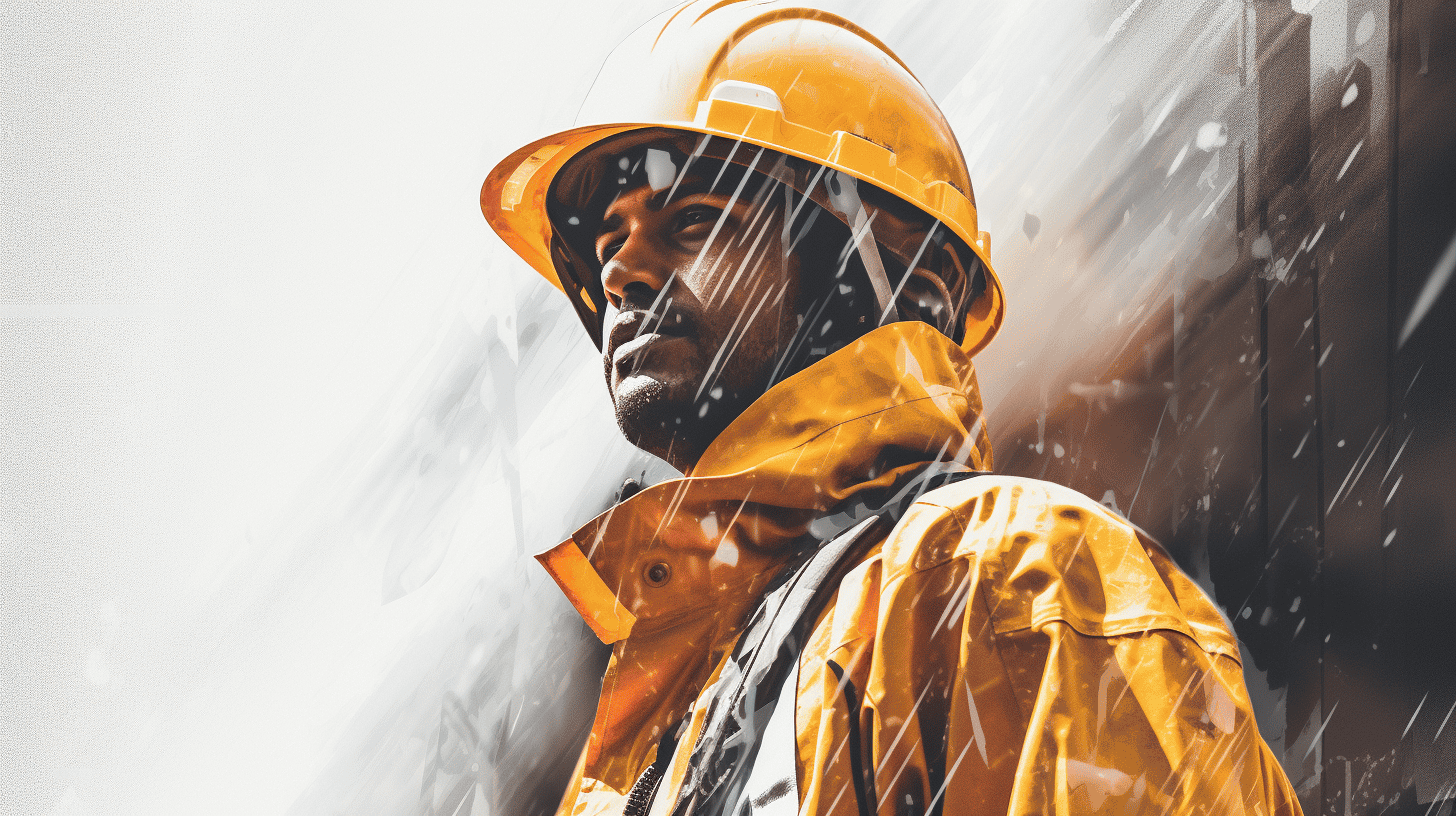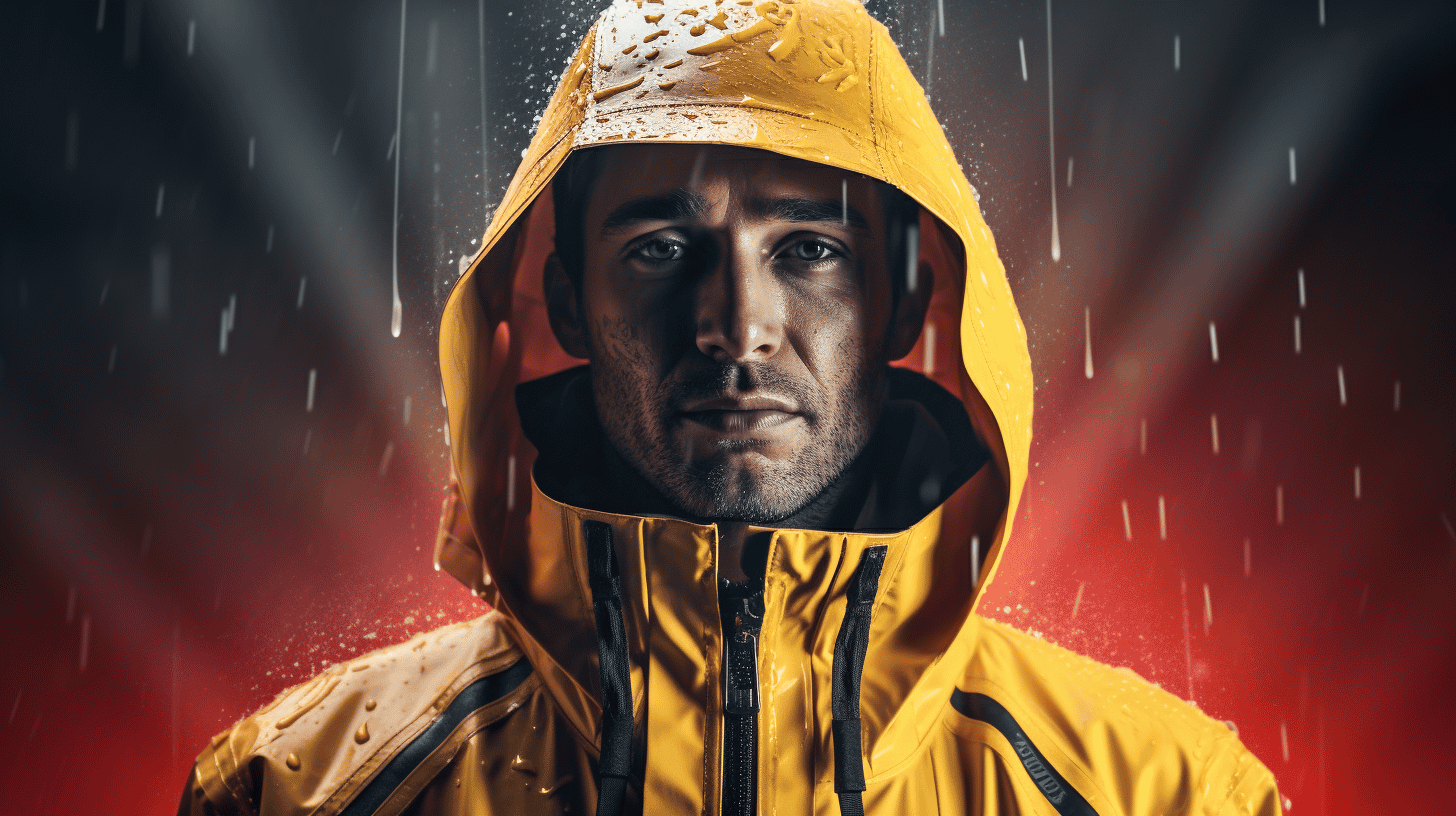Rainy days can dampen the spirit of even the most enthusiastic construction workers. A sky that suddenly opens up to shower downpour can leave one drenched, cold, and downright miserable. But, fear not! What if you could continue working comfortably regardless of the weather? Having the right rain gear is the key. This article will guide you through various top-rated rain gear options specifically designed for construction workers. Constructed with waterproof and tear-resistant materials, this stuff won't let the weather keep you down. You will not only find detailed information on why you need waterproof and tear-resistant gear, but we'll also explore diverse types, their pros and cons, and even tips on their care and maintenance. So hang tight, brave the storm, and let's delve right in!
The Need for Waterproof and Tear-Resistant Rain Gear in Construction
When it comes to the world of construction, one cannot merely rely on sunny skies. Rainy days are as inevitable as they are unpredictable, hence, the need for waterproof and tear-resistant rain gear becomes glaringly essential. This gear, often overlooked, does not just keep workers dry — it's the very bridge between safety, productivity, and smooth operation. Let's delve into these aspects and understand the importance of investing in high-quality rain gear for construction workers.
Safety Concerns
For those maneuvering in the construction sector, safety is not just a consideration but a prevailing duty. The risk factors on a construction site amplify dramatically in adverse weather conditions, especially rain. Here's where waterproof and tear-resistant gear steps in to allay some of these concerns.
- Slip and Falls: Waterproof gear reduces the likelihood of slips and falls by keeping the body dry and maintaining body temperature, thus limiting weather-related distractions.
- Hypothermia: By retaining body heat and staying dry, workers can prevent conditions like hypothermia which could arise from prolonged exposure to cold and wet environments.
- Visibility: Waterproof gear typically comes in bright, reflective colors. This improves workers' visibility on gloomy rainy days, thereby reducing accidental clashes or injuries.
- Equipment Protection: Tools and equipment, when exposed to water, can get compromised. Waterproof gear usually comes with pockets and compartments that provide a safe, dry place for storing tools.
Productivity Aspects
Beyond safety, the right rain gear plays a key role in enhancing productivity. Engaging in demanding tasks amidst a downpour can be daunting for even the most seasoned construction workers. Waterproof and tear-resistant rain gear can help manage these challenges in several ways.
- Comfort: By keeping workers dry and comfortable, they stay focused and engaged in their tasks, leading to fewer errors and higher productivity.
- Durability: Tear-resistant rain gear lasts longer and can withstand the rough handling typical in construction sites, reducing the need for frequent replacements.
- Flexibility: High-quality rain gear is often designed with flexibility in mind, enabling workers to move freely and carry out tasks efficiently, even in adverse conditions.
In the bustling hubbub of construction sites, rain can be a real dampener. But with the right waterproof and tear-resistant rain gear, safety and productivity can be upheld even when the weather turns grim. A worthy investment indeed, for both workers' wellbeing and the seamless continuation of construction projects.
Features to Look for in Rain Gear for Construction Workers
As a construction worker, you often find yourself at the mercy of Mother Nature. One minute it's sunny and dry, the next, clouds roll in, and you're caught in a downpour. It's times like these that require high-quality rain gear specifically designed for construction work—the kind that keeps you dry, comfortable, and focused even during the harshest weather. The question is, what features do you need to look for when investing in rain gear? Let's delve into that.
Waterproofing
Without a doubt, the primary function of any rain gear is to provide waterproof protection. But not all rain gear is created equal. The best rain gear for construction workers employs coatings or laminates on the inner or outer shell of the gear, preventing water from getting in while allowing sweat and moisture to escape. Remember, your waterproof gear should also offer taped seams where necessary, to ensure no sneaky water droplets find their way in.
Tear-resistance
Working in construction means you’re often navigating rough terrain, coming into contact with sharp objects and materials. Your rain gear needs to be robust - able to take a punch (or a poke!). Tear and cut-resistant materials such as heavy-duty nylon or polyester offer superior protection against potential damage. This feature ensures your rain gear can stand up to the rigors of your work, offering long-term reliability.
Durability
Your rain gear is an investment, so you'll want it to last. Look for manufacturers offering items made of sturdy, high-quality materials like reinforced PVC or coated nylon that can withstand regular use and the occasional mishap. Gear with double-layered sections in areas prone to wear and tear, such as knees and elbows, will also increase your garment's lifespan.
Comfort
You might think that comfort is a luxury when considering the hardy, rugged nature of construction work. But actually, it's essential. Ill-fitted or uncomfortable rain gear can limit your movement and make you feel outright miserable, affecting your productivity. Your rain gear should not only protect you from the elements but also offer features such as adjustable cuffs, spacious cuts, and even lined materials for that extra level of coziness.
Ventilation
Good ventilation is like the unsung hero of optimal rain gear. It ensures that heat and moisture can escape from the inside, preventing you from getting wet from your sweat—conditions that can lead to discomfort and potential health hazards. Look for gear with built-in vents, often found under arms or across the back. Some advanced rain gear may even have zippable vents, offering you the flexibility to control your level of airflow and temperature.
The right rain gear can be a game changer, transforming what could be a long, wet, and gloomy work day into an efficient, comfortable, and dry one. So, keep these features in mind next time you’re shopping for your construction wardrobe staples. It's just another way to show that when it comes to braving the elements, you're more than ready.
Types of Waterproof and Tear-Resistant Rain Gear
Whether you're an outdoor enthusiast, a city-dweller traversing rainy streets, or simply someone who enjoys the fresh air after a thunderstorm, having the right waterproof and tear-resistant gear can make all the difference. This article aims to guide you through the various options available, helping you prepare for wet weather without sacrificing comfort.
Jackets
What is a rainy day without a waterproof jacket? Jackets designed for rain are typically made from materials like nylon or polyester, treated with a durable water repellent (DWR) coating to keep you dry.
- Softshell Jackets: These are great for light rain and offer the additional benefit of breathability.
- Hardshell Jackets: These are perfect for heavy rains and harsh conditions due to their more robust protection.
- 3-in-1 Jackets: A topping-out option, these come with an outer rain shell and an inner insulation layer, which can be worn separately or together, depending on the weather.
Furthermore, look for features like sealed seams, storm flaps over zippers, and adjustable hoods for optimal water resistance.
Pants
Rain trousers or waterproof over-pants can round off your weatherproof wardrobe. Here are a few types:
- Over-Pants: Light and roomy, these can be quickly pulled on over your regular pants when rain starts pouring.
- Rain Bibs: These offer fuller coverage—from waist to ankle—providing an excellent choice for heavy rain.
Boots
Invest in quality waterproof boots to keep your feet dry and comfortable in rain. Options include:
- Rubber Rain Boots: Fully waterproof, they're a classic choice.
- Waterproof Leather Boots: These offer a stylish and rugged alternative, ensuring your feet stay dry and comfortable.
Gloves
Waterproof gloves, often made from synthetics like nylon or polyester, are must-haves to keep your hands dry. Depending on your activity and weather conditions, opt for light or insulated gloves.
Hats
Finally, don't forget about headgear. A waterproof hat can protect your face, ears, and neck from rain. Look for adjustable straps for secure fitting and brimmed options for additional coverage.
Protecting yourself from the elements shouldn't mean sacrificing style or comfort. With these waterproof and tear-resistant options, you'll be well-prepared for whatever Mother Nature throws at you. Remember, the best choice for you depends on your needs, preferences, and the specific weather conditions you're preparing for. Now go out, enjoy the rain, and let the storm clouds roll in!
Pros and Cons of Different Waterproof and Tear-Resistant Materials
Materials in our daily lives are all around us; in our clothing, our homes, and even our gadgets, they safeguard us from the elements, protect our possessions, and enable us to lead comfortable lives. Notably, waterproof and tear-resistant materials have gained popularity in recent years for their durability and protective qualities. In this section, we'll examine the pros and cons of these types of materials, splitting them into two broad categories: natural and synthetic.
Natural Materials
Natural materials have been used across centuries and cultures, with leather and wool leading the pack.
- Leather: Known for its strength and durability, leather is a natural water-resistant material that has been used in various forms, from clothing to bookbinding. The downside of leather is its susceptibility to warping and shrinking when subjected to excessive water.
- Wool: Wool is another natural material that possesses water-resistant properties. It can absorb moisture without feeling wet, keeping you warm even in damp conditions. However, wool can be expensive, and it isn't as durable as some synthetic options.
Synthetic Materials
In contrast, synthetic materials, borne out of scientific innovation, offer numerous advantages.
- Nylon: Nylon is a popular synthetic material known for its exceptional strength, elasticity, and resistance to tear and water. However, its production involves non-renewable resources and can be harmful to the environment, a significant downside for eco-conscious folks.
- Polyester: Like nylon, polyester is strong, resistant to tear and water, and more affordable compared to natural materials. However, it doesn't breathe well, which may lead to discomfort in hot or humid conditions.
Each type of material, be it natural or synthetic, has its unique strengths and limitations. Some may value the comfort and authenticity of natural materials, while others may prefer the durability and cost-effectiveness of synthetic ones. By understanding these pros and cons, you can make an informed decision concerning your requirements and choose the right waterproof and tear-resistant material that best aligns with your lifestyle.
Care and Maintenance of Waterproof and Tear-Resistant Rain Gear
From trekking in the wild to commuting in urban landscapes, waterproof and tear-resistant rain gear is an essential shield against the elements. Fashioned from innovative materials, these weather-resistant pieces offer both style and practical protection. However, they do need some tender love and care to prolong their longevity. Below we'll provide a comprehensive guide to caring for and maintaining your rain gear, ensuring it stays in tip-top shape as long as possible.
Regular Washing
Believe it or not, keeping your rain gear clean actually helps maintain its water-resistance. While you might think washing might wear out the materials, it’s quite the opposite. Breathable rain gear is formulated with a porous waterproof membrane which can get blocked by dirt and oils, hampering its ability to repel water. Here are some steps to clean your gear:
- Wash often: A monthly wash, or after ten outings, is a good general guideline unless the gear is visibly dirty.
- Use a tech wash: Regular detergents can degrade waterproof coatings, so always opt for a cleaner specifically designed for technical outerwear.
- Avoid fabric softeners: Their residues can clog the breathable membrane.
- Rinse thoroughly: Make sure all soap residue is fully rinsed to prevent the buildup that can interfere with water repellence.
Proper Drying Techniques
How you dry your rain gear is just as important as how you wash it. It's essential to avoid high-heat drying methods that could potentially damage the fabric.
- Gentle tumble dry: A low heat tumble dry can help to reactivate the waterproofing technology.
- Air dry: If you're not in a rush, letting it air dry naturally is the preferred method. Just don’t leave gear in direct sunlight for an extended period, as UV exposure can degrade the fabric.
Periodic Re-waterproofing
Even with the best care and maintenance, waterproof layers will eventually deteriorate over time. Look out for signs like water soaking into the fabric instead of beading up. Once you notice this, it might be time for a new waterproofing treatment. These exist in the forms of wash-in and spray-on treatments that can be purchased online or from outdoor equipment stores.
Simple Repairs
Even tear-resistant rain gear can suffer from wear and tear over time. But don't worry; you won't have to replace your favorite coat over a little snag or tear. Most repairs can be done easily at home with a suitable patch kit.
"Taking good care of your waterproof and tear-resistant rain gear prolongs its useful life, saves you money, and ensures you stay dry and comfortable in any weather condition," whispers the voice of experience.From regular washing to trodden path repairs, appropriate care and maintenance ensure your rain gear continues to serve its purpose effectively, providing you faithful service through many a storm. Invest time in your rain gear care routine, and it will invariably pay off.
Conclusion
Investing in quality waterproof and tear-resistant rain gear is no longer just an option, but a mandatory safety measure for every construction worker. The right gear not only increases workers' safety but also enhances productivity by allowing unrestricted movement even in harsh weather conditions. And while there are numerous materials on the market, the choice often boils down to a balance between natural and synthetic - each having its pros and cons.
As with any gear, proper care is essential to maintaining its efficiency, durability, and lifespan. Keep it clean, let it dry out fully before storing, and conduct regular inspections to ensure it remains in the best condition.
Remember, the perfect rain gear is effective, comfortable, durable, and easy to maintain. If you're looking to upgrade to a high-performing, trusted brand, look no further than Hurricane Raingear. Their premium designs are 100% waterproof, tear-resistant and breathable, providing enhanced visibility with reflective 3M striping. Handcrafted in the Pacific North West, it's gear trusted by thousands. Discover more about their products by visiting their homepage. Stay safe, stay dry, and keep building.
Frequently Asked Questions
-
What are the key features to look for in rain gear for construction workers?
Key features to look for in rain gear for construction workers include waterproof and tear-resistant materials, durable construction, reflective strips for visibility, adjustable cuffs and hems, multiple pockets for storage, and a comfortable fit.
-
Which are the top-rated waterproof rain gear options for construction workers?
Some of the top-rated waterproof rain gear options for construction workers are: 1. Carhartt Men's Shoreline Jacket, 2. Helly Hansen Workwear Impertech II Deluxe Rain Jacket and Pants, 3. Grundéns Men's Gage Weather Watch Jacket and Bib, 4. Frogg Toggs Ultra-Lite2 Rain Suit, and 5. Marmot Men's Precip Lightweight Rain Jacket.
-
Are there any tear-resistant rain gear options available for construction workers?
Yes, there are tear-resistant rain gear options available for construction workers. One popular option is the Caterpillar Men's Heavy Insulated Parka which is not only tear-resistant but also offers insulation for colder weather conditions.
-
What is the benefit of having reflective strips on rain gear for construction workers?
Having reflective strips on rain gear for construction workers improves visibility and safety, especially in low-light or high-traffic conditions. These reflective strips enhance the worker's visibility to others, reducing the risk of accidents.
-
How can I ensure a comfortable fit when purchasing rain gear for construction workers?
To ensure a comfortable fit when purchasing rain gear for construction workers, refer to the sizing charts provided by the manufacturer and measure yourself accurately. It is also helpful to read customer reviews to determine whether the sizing runs true to size or if any adjustments need to be made.























Leave a comment
This site is protected by hCaptcha and the hCaptcha Privacy Policy and Terms of Service apply.